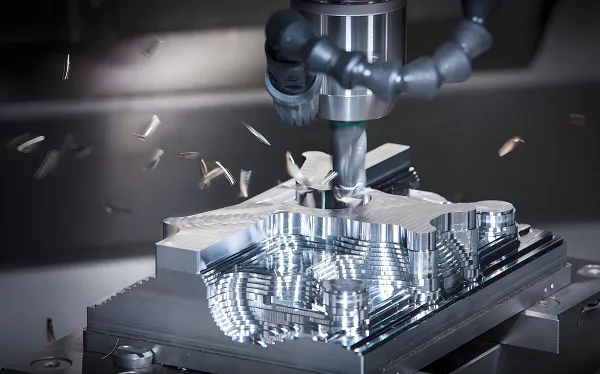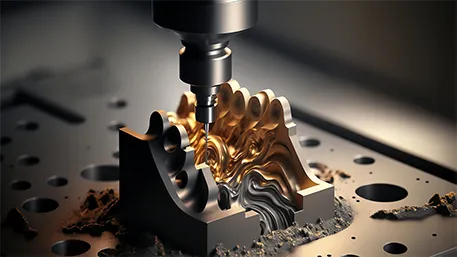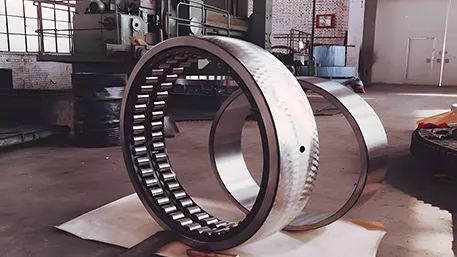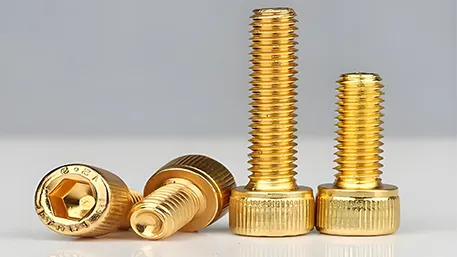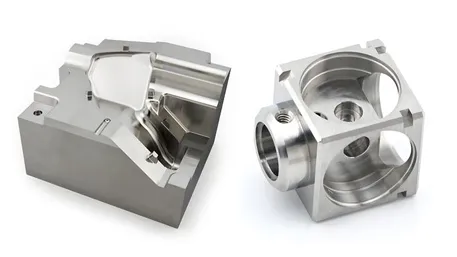Preface

Ⅰ. Basic Understanding of Medium-Batch Injection Molding Services
1.1 Definition and Core Boundaries
|
Production Scale
|
Quantity Range
|
Core Objective
|
Mold Type
|
Delivery Cycle
|
Positioning of Medium-Batch Services
|
|
Small-Batch Trial Production
|
10–500 units
|
Verify design, test processes
|
Rapid prototype mold (3D printing/aluminum alloy)
|
1–2 weeks
|
Medium-batch undertakes stable production after small-batch optimization
|
|
Medium-Batch Production
|
500–10,000 units
|
Balance cost, ensure delivery, flexible adjustment
|
Standard steel mold/optimized aluminum mold
|
2–4 weeks
|
Connect trial production and mass production, adapt to market verification needs
|
|
High-Volume Mass Production
|
10,000+ units
|
Maximize cost reduction, efficient production capacity
|
High-precision multi-cavity steel mold
|
4–8 weeks
|
Medium-batch provides process data support for high-volume production
|
1.2 Core Service Advantages
- Cost Adaptation:
-
- Mold Cost: Adopts “standard mold base + simplified cavity” design (e.g., 2–4 cavities), reducing cost by 40%–60% compared to high-volume multi-cavity molds (8–16 cavities), and supports later upgrade to mass production molds;
-
- Unit Cost: Optimizes injection parameters and purchases materials in batches, reducing unit cost by 20%–30% compared to small-batch production (e.g., a PP part costs 1.5 RMB per unit in small batches, and can be reduced to 1.1 RMB in medium batches).
- Flexible Lead Time:
-
- Mold Preparation: Standard steel molds are delivered in 2–3 weeks (1 week for small-batch rapid molds, 4–6 weeks for high-volume high-precision molds);
-
- Production Cycle: 3–5 days for 500 units, 7–10 days for 5,000 units, 12–15 days for 10,000 units, supporting urgent orders (e.g., 1,000 units delivered in 7 days).
- Controllable Processes:
-
- Optimizes processes based on small-batch trial production data (e.g., adjusting injection speed, holding time), with first-pass yield ≥ 95%;
-
- Supports parameter fine-tuning during production (e.g., customer requirement to change part wall thickness by ±0.1mm) without re-molding.
- Closed-Loop Service:
-
- Provides end-to-end services including “mold design – material selection – production – post-processing – inspection – packaging – logistics”, eliminating the need for customers to coordinate multiple suppliers;
-
- Reserves 10%–15% spare parts (adjustable on demand) to address transportation losses or replacement of a small number of defective products.
Ⅱ. Core Service Modules of Medium-Batch Injection Molding
2.1 Pre-Production Requirement Communication and Solution Design
2.1.1 Requirement Confirmation Dimensions
|
Confirmation Item
|
Core Content
|
Materials to Be Provided by Customer
|
|
Product Information
|
3D drawings (STP/IGS format), 2D annotations (critical dimension tolerances, geometric tolerances), appearance requirements (color difference, roughness)
|
Design drawings, samples (if available)
|
|
Production Requirements
|
Batch quantity (e.g., 2,000 units), delivery time (e.g., in 3 weeks), batch delivery requirements (e.g., 2 batches of 1,000 units each)
|
Purchase order or demand list
|
|
Material Requirements
|
Material type (e.g., PC/ABS), performance (e.g., flame retardant V0, temperature resistance of 120℃), certifications (e.g., RoHS, FDA)
|
Material specification sheet or sample material analysis report
|
|
Post-Processing Requirements
|
Gate removal, polishing, silk screen/pad printing, laser engraving, assembly (e.g., assembly of plastic parts and hardware)
|
Post-processing effect drawings, assembly drawings
|
2.1.2 Solution Output Content
- Feasibility Analysis:
-
- Structural Feasibility: Checks part wall thickness (e.g., minimum wall thickness ≥ 0.8mm to avoid short shot), fillets (R ≥ 0.3mm to reduce stress concentration), and proposes optimization suggestions (e.g., adjusting 0.5mm wall thickness to 0.8mm);
-
- Material Recommendation: Matches cost-effective materials based on requirements (e.g., PP + talc for ordinary casings due to low cost; PPS for high-temperature resistant components), and provides material samples for customer confirmation;
-
- Cost Quotation: Details include mold cost (e.g., 18,000 RMB for a 2-cavity steel mold), material cost (e.g., 18 RMB/kg for PC, 50kg required for 2,000 units, totaling 900 RMB), production cost (e.g., 1,200 RMB for processing 2,000 units), post-processing cost (e.g., 1 RMB/unit for silk screen, totaling 2,000 RMB), with transparent and traceable total quotation.
- Mold Solution:
-
- Number of Cavities: Determined based on batch quantity and cycle (e.g., 2-cavity mold for 2,000 units with a 5-day production cycle; 4-cavity mold for 5,000 units with a 7-day cycle);
-
- Mold Material: Prioritizes S136 stainless steel (corrosion-resistant, easy to polish, suitable for medium-batch production, service life of 10,000–50,000 units); 718H steel (service life of 5,000–20,000 units) can be used for cost reduction if needed;
-
- Gate Design: Pin gate (suitable for appearance parts with no obvious marks) or edge gate (suitable for structural parts with stable filling), providing gate position diagrams for customer confirmation.
2.2 Mold Fabrication and Trial Molding Verification
2.2.1 Core Characteristics of Medium-Batch Molds
- Simplified Design: Reduces unnecessary structures (e.g., no hot runner system for high-volume production, replacing with cold runner + automatic gate cutting) to lower mold cost;
- Upgradability: Reserves space for mass production mold modification (e.g., mold base size compatible with high-volume multi-cavity molds, enabling later expansion to 8 cavities);
- Rapid Processing: Adopts a combined process of “CNC milling + EDM (Electrical Discharge Machining)”, avoiding high-precision grinding (roughness of non-critical surfaces ≤ Ra 1.6μm is sufficient) to shorten mold processing cycle.
2.2.2 Trial Molding and Solution Optimization
- Trial Molding Process:
-
- First-Piece Trial Molding: Uses 1-cavity trial parts to verify structure (e.g., whether dimensions meet tolerances) and appearance (e.g., no bubbles, flash), and adjusts injection parameters (e.g., increasing injection speed from 80mm/s to 100mm/s to solve short shot);
-
- Small-Batch Trial Production: Produces 50–100 trial units, inspects critical dimensions (e.g., measuring diameter with calipers, geometric tolerances with CMM), performance (e.g., tensile test, flame retardant test), and issues a Trial Production Report;
-
- Customer Confirmation: Provides trial parts and reports; mass production starts only after customer confirmation. If adjustments are needed (e.g., color difference), optimizes molds (e.g., adjusting cavity polish) or processes (e.g., adjusting barrel temperature) and conducts a second trial molding until qualification.
2.3 Mass Production Management and Control
2.3.1 Production Equipment Configuration
- Injection Molding Machine Selection: Uses medium-sized injection molding machines with clamping force of 50–500kN (e.g., Haitian MA1200, Chen Hsong JM168) and injection volume of 50–500g, suitable for common medium-batch part sizes (e.g., 100mm×80mm×50mm casings);
- Auxiliary Equipment: Equipped with automatic material loaders (ensuring stable material supply), chillers (temperature control ±1℃ to ensure stable mold temperature), and automatic gate cutters (replacing manual work to improve efficiency).
2.3.2 Production Process Management and Control
- Parameter Solidification:
-
- Formulates a Medium-Batch Production Process Card, specifying injection speed (e.g., 80–120mm/s), injection pressure (e.g., 80–120MPa), holding pressure (60%–80% of injection pressure), holding time (1–3s), and cooling time (2–5s); parameters are checked before each startup;
-
- First-Piece Inspection: Conducts full-dimensional inspection of the first piece per shift; production continues only after qualification, and records are made in the First-Piece Inspection Record Form.
- In-Process Sampling Inspection:
-
- Frequency: Samples 10 units every hour, inspecting items including dimensions (critical dimension tolerance ±0.1mm), appearance (no scratches, bubbles, flash), and weight (deviation ≤ 2%);
-
- Abnormal Handling: If dimension deviation is found (e.g., diameter 0.2mm larger than standard), immediately stops production for inspection (e.g., whether mold temperature is too high, whether injection pressure is abnormal); after adjustment, produces 5 trial units and resumes production only after qualification, recording in the Abnormal Handling Report.
- Quality Traceability:
-
- Attaches batch labels to each batch of products (including production date, shift, operator, equipment number) to achieve “one-unit-one-traceability”;
-
- Stores production data (e.g., injection parameter records, inspection reports) for at least 1 year for later traceability.
2.4 Post-Processing and Delivery Services
2.4.1 Common Post-Processing Processes
|
Process Type
|
Application Scenario
|
Quality Standard
|
Cycle (for 2,000 units)
|
|
Gate Removal/Polishing
|
All parts, removing gate marks and burrs
|
No obvious marks, edge roughness ≤ Ra 3.2μm
|
1 day
|
|
Silk Screen/Pad Printing
|
Appearance parts, printing logos and text
|
Clear patterns, adhesion test (no peeling with 3M tape)
|
1.5 days
|
|
Laser Engraving
|
Precision marking (e.g., product serial numbers)
|
Clear marks, no overflow edges
|
1 day
|
|
Assembly
|
Multi-part assembly (e.g., casing + inner bracket)
|
Assembly gap ≤ 0.1mm, no looseness
|
2 days
|
2.4.2 Packaging and Delivery
- Packaging Solution:
-
- Inner Packaging: Uses anti-static bags (for electronic parts) or bubble wrap (for scratch-prone parts) for individual packaging to avoid mutual friction;
-
- Outer Packaging: Uses corrugated cartons (e.g., 5-layer corrugation) with EPE foam lining, labeled with product name, batch number, quantity, and moisture-proof/fragile labels.
- Delivery Guarantee:
-
- Logistics Selection: Regular parts are shipped via courier (e.g., SF Express, arrival within 3 days); urgent parts are transported via dedicated vehicles (e.g., 2,000 casings delivered the next day);
-
- Delivery Documents: Encloses Product Qualification Certificate, Inspection Report, and Packing List with the goods, specifying product information, inspection results, and quantity.
Ⅲ. Typical Application Scenarios and Cases
3.1 Consumer Electronics: Smart Bracelet Casing
Customer Requirements
- Product: Smart bracelet casing (size 50mm×30mm×12mm, material PC/ABS, flame retardant V0);
- Batch Quantity: 3,000 units, delivered in 2 batches (1,500 units in the first batch after 2 weeks; 1,500 units in the second batch after 1 week);
- Requirements: No scratches on appearance, color difference conforming to Pantone color code (e.g., PMS 186C), critical dimension tolerance ±0.05mm.
Service Solution
- Mold: 2-cavity S136 steel mold, pin gate design, mold cost 16,000 RMB (upgradeable to 4-cavity mold later);
- Material: PC/ABS (Chimei 757, RoHS certified), material cost 21,000 RMB (117kg required for 3,000 units, 18 RMB/kg);
- Production: Haitian MA1000 injection molding machine, injection speed 90mm/s, injection pressure 100MPa, production cycle 8 days (including 1 day for trial molding);
- Post-Processing: Gate removal + polishing + laser engraving (product serial numbers), cost 9,000 RMB (0.3 RMB/unit for laser engraving);
- Delivery: First batch shipped via SF Express with Inspection Report (including dimension inspection and flame retardant test results); second batch delivered as scheduled.
Delivery Result
- Yield Rate: 98.5% (only 45 units reworked due to slight color difference, re-delivered within 3 days);
- Customer Feedback: Lead time met requirements, cost reduced by 25% compared to small-batch (500 units), laying a foundation for subsequent high-volume (10,000 units) cooperation.
3.2 Automotive Parts: In-Vehicle USB Port Housing
Customer Requirements
- Product: In-vehicle USB port housing (size 25mm×15mm×10mm, material PA66 + 30% glass fiber, temperature resistance of 120℃);
- Batch Quantity: 5,000 units, delivered in 1 batch, requiring IATF16949 certification;
- Requirements: Insertion/extraction force 5–10N, aging resistance test (no cracking after baking at 120℃ for 1,000h).
Service Solution
- Mold: 4-cavity 718H steel mold, edge gate design, mold cost 22,000 RMB (compatible with later upgrade to 8-cavity mass production mold);
- Material: PA66 + 30% glass fiber (DuPont 70G30, IATF16949 certified), material cost 45,000 RMB (250kg required for 5,000 units, 18 RMB/kg);
- Production: Chen Hsong JM168 injection molding machine, injection speed 110mm/s, injection pressure 120MPa, production cycle 10 days (including 2 days for trial molding and process optimization);
- Inspection: Samples 1 unit every 100 units for insertion/extraction force test, samples 1 unit every 500 units for aging resistance test, and issues IATF16949 Compliance Report;
- Delivery: Transported via dedicated vehicle, packaged in anti-static corrugated cartons with full-batch inspection records enclosed.
Delivery Result
- Yield Rate: 99.2% (only 40 units reworked due to unqualified insertion/extraction force, re-delivered within 2 days);
- Customer Feedback: Meets automotive industry certification requirements, process data can be directly reused for high-volume production, shortening mass production preparation cycle.
Ⅳ. Frequently Asked Questions (FAQ)
4.1 Can molds for medium-batch injection molding be reused for high-volume production?
- Mold base size is compatible with high-volume multi-cavity molds (e.g., 2-cavity mold base can be upgraded to 8-cavity);
- Cavity material uses S136 (service life 10,000–50,000 units). If higher service life (e.g., 100,000 units) is required for high-volume production, cavity inserts can be replaced with H13 steel, reducing modification cost by 60% compared to re-molding.
4.2 How to handle customer requests to adjust part dimensions (e.g., changing wall thickness from 1.2mm to 1.0mm) during mass production?
- Feasibility Assessment: If the dimension adjustment does not affect the mold structure (e.g., only reducing wall thickness by 0.2mm without major cavity modification), complete mold polishing (e.g., polishing the cavity inner wall by 0.2mm) within 2–3 days;
- Process Adaptation: Adjust injection parameters (e.g., reducing injection pressure by 5–10MPa to avoid over-holding), and produce 50 trial units for dimension inspection;
- Cost Calculation: Only charge mold polishing fee (e.g., 500 RMB) without additional mold opening fee, extending the cycle by 1–2 days.
4.3 How to ensure the consistency of medium-batch products (e.g., color difference, dimensions)?
- Material Control: Use materials from the same supplier and batch for the same production batch to avoid material mixing;
- Equipment Stability: Calibrate the injection molding machine (e.g., injection volume error ≤ 1%) and temperature control system (temperature fluctuation ±0.5℃) before production;
- Enhanced Inspection: Measure critical dimensions with CMM (precision ±0.001mm), compare color difference with standard light box (D65 light source), and retain at least 10 samples per batch for later comparison.
4.4 What is the cost difference between medium-batch and high-volume production?
|
Cost Item
|
Medium-Batch (4-Cavity Mold)
|
High-Volume (8-Cavity Mold)
|
Reason for Difference
|
|
Mold Cost
|
20,000 RMB
|
45,000 RMB
|
High-volume molds have more cavities and higher precision requirements
|
|
Material Cost
|
45,000 RMB
|
44,000 RMB
|
Higher material purchase volume for high-volume, 5% lower unit price
|
|
Production Cost
|
15,000 RMB
|
12,000 RMB
|
More cavities for high-volume, higher output per unit time
|
|
Total Cost
|
80,000 RMB
|
101,000 RMB
|
Medium-batch is more cost-effective for 500–10,000 units
|
|
Unit Cost
|
16 RMB
|
20.2 RMB
|
Lower mold cost allocation for medium-batch; more favorable material/production cost for high-volume
|
Ⅴ. Service Cooperation Process
- Requirement Communication (1–2 days): Customer provides materials; we output feasibility analysis and quotation plan;
- Contract Signing (1 day): Confirm the plan and sign the contract (including mold cost, production cost, delivery cycle, and quality standards);
- Mold Fabrication (2–3 weeks): Mold processing, trial molding, and customer confirmation of trial parts;
- Mass Production (2–15 days based on batch quantity): Mass production per contract, with in-process sampling inspection and quality control;
- Post-Processing and Delivery (1–3 days): Post-processing, packaging, logistics shipment, and enclosure of delivery documents;
- After-Sales Support (1 month after delivery): Respond to customer feedback within 24 hours and provide solutions (e.g., rework, replacement) within 48 hours.
Disclaimer
- All information, opinions, and data contained in this article are for the purpose of information transmission only and do not constitute any advice on investment, transactions, law, medical care, or other matters.
- The content of the article is compiled based on public information or created based on the author’s personal understanding. Although every effort is made to ensure accuracy, it does not guarantee the completeness, accuracy, and timeliness of the information, nor does it bear any responsibility for any losses caused by the use of the content of this article.
- If the article involves third-party opinions, pictures, data, and other content, the copyright belongs to the original author. In case of infringement, please contact us for deletion.
- Readers should make independent decisions based on their actual situation and combined with professional opinions. The user shall bear all consequences arising from the use of the content of this article.


